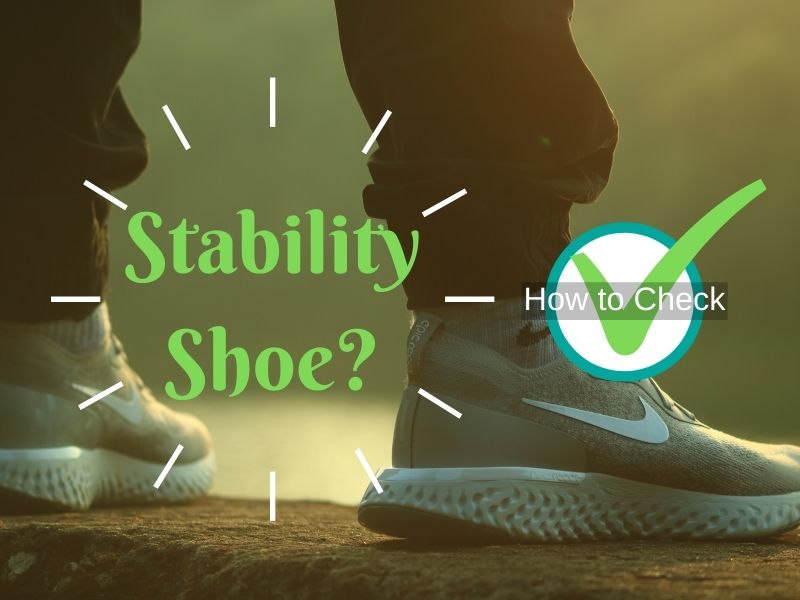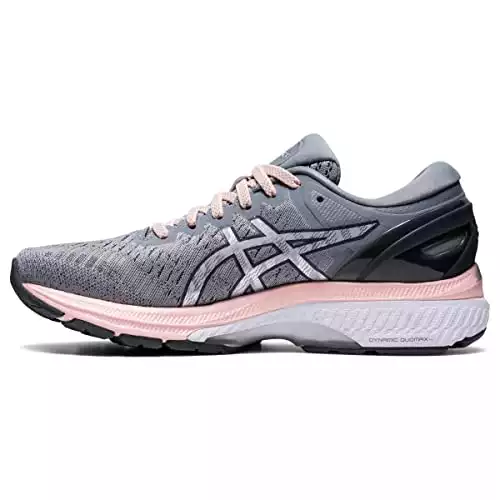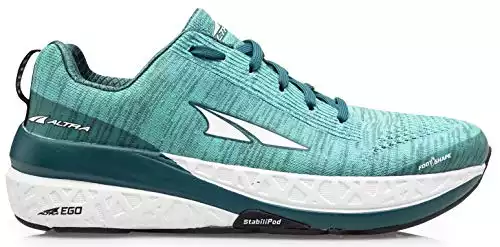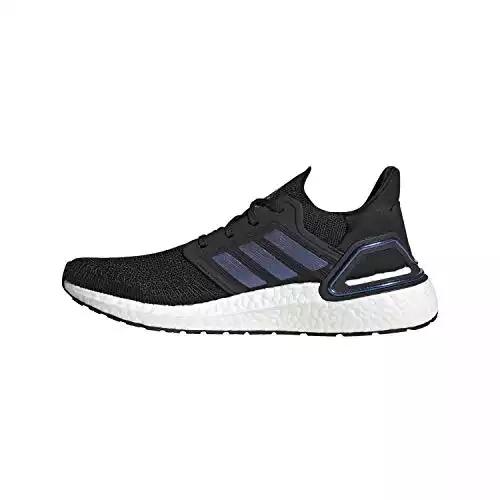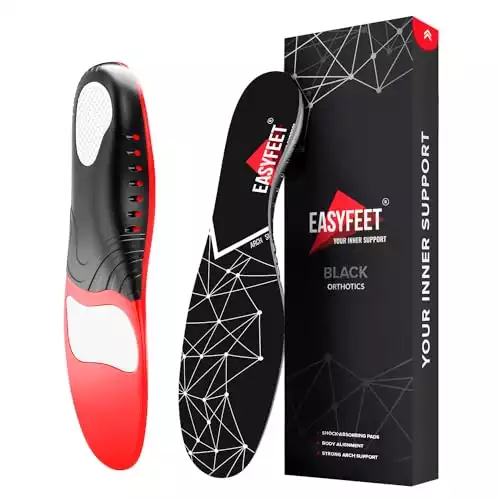As a runner, your shoes are your most important piece of equipment. If you have a flat or low arch, a regular shoe may not be comfortable or give the added support you require. In that case, a stability shoe would be the best option for you.
What are stability shoes? Stability shoes are shoes that are a type of running shoe designed to offer added support for reduced risk of injury and give added comfort for people who have a low arch in their feet.
What are the signs to know if you need stability shoes? Where can you purchase them? I will answer that and also explain the science behind how they help stabilize your foot. I will also discuss the different kinds of stability shoes, and for whom each kind are best suited.
What Is a Stability Shoe?
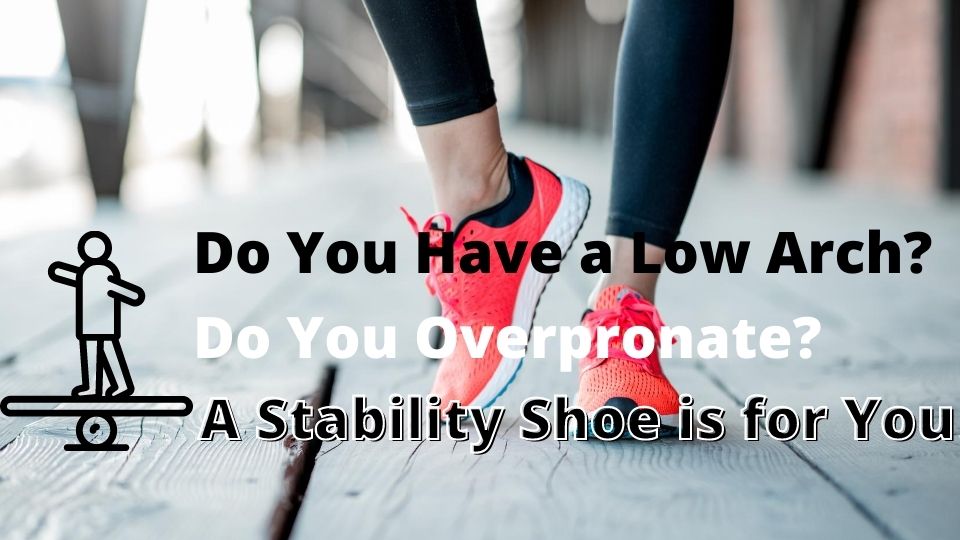
A stability shoe is a shoe that is a type of running shoe designed to offer added support for reduced risk of injury and comfort for people who are overpronators. Pronation refers to the natural movement and weight distribution of the foot while running or walking.
Overpronators are people who have flat arches in their feet that cause their feet to roll more inward than people who are normal pronators, or neutral runners.
The bodies of overpronators overcompensate to even out weight distribution in relation to your feet to your legs. Over time, this overuse can lead to injuries like Achilles tendinitis, shin splints, and runner’s knee. The best way to correct this and hopefully prevent those injuries is proper footwear.
Stability shoes usually are made with a firmer medial post to minimize inward foot roll. Manufacturers used to do this mainly with the use of wedges, bars, and other forms of support under the foot’s arch to balance weight distribution around the foot.
Are Stability Shoes Heavy?
These days shoemakers have taken a more minimalist approach and focus on making stability shoes to reduce the risk of injury and improve comfort during runs. Now the shoes aren’t made as heavy nor as stiff. This is to encourage the free and natural movement of feet throughout the gait cycle. Your running gait cycle refers to the way your feet and the rest of your body moves when you run.
Do You Need a Stability or Neutral Shoe?
Stability is something we all want from our shoes when running, but stability shoes are not best for everybody. If you have a natural gait cycle or a neutral arch, stability shoes may feel uncomfortable and not be beneficial to a runner. Neutral shoes have a softer medial post that is better suited for people who are normal pronators.
This makes it important to identify your type of foot when purchasing a new pair of running shoes and select the correct type of shoe. If you shop at a shoe store that specializes in running shoes, they should have knowledgeable staff that can help you determine which shoe is best for your type of foot.
If you don’t have that benefit, there are a few signs that let you know you are an overpronator:
1. Check the Pattern of Shoe Wear On Your Old Shoes

Do the soles of your old shoes show signs of heaviest wear on the inside of the heel and under the ball of the feet? If that is the case, that is a sign you have a low arch and would benefit from stability shoes.
- Normal pronators’ shoes will show even wear across the bottom of the shoes.
- Underpronators will show heavier signs on the outer side of the heel compared to the inner side of the heel.
2. Ask a Professional

A running-oriented physical therapist can help you figure your body’s natural gait. That will tell you what kind of shoes will work best for you. If you are not able to visit a medical professional to help you with this, you can visit a running store. There you should be able to talk to someone who will know how to help you figure out the best shoe type for you.
3. Watch Yourself Run

If you can, have someone record you running, preferably on a flat surface or treadmill. Rewatch the video in slow motion paying particular attention to how your knees and legs are going straight ahead, or they are rotating toward the inside. If it looks like they are rotating inward or that your knees are rubbing together, that usually means you are an overpronator.
4. Wet Test
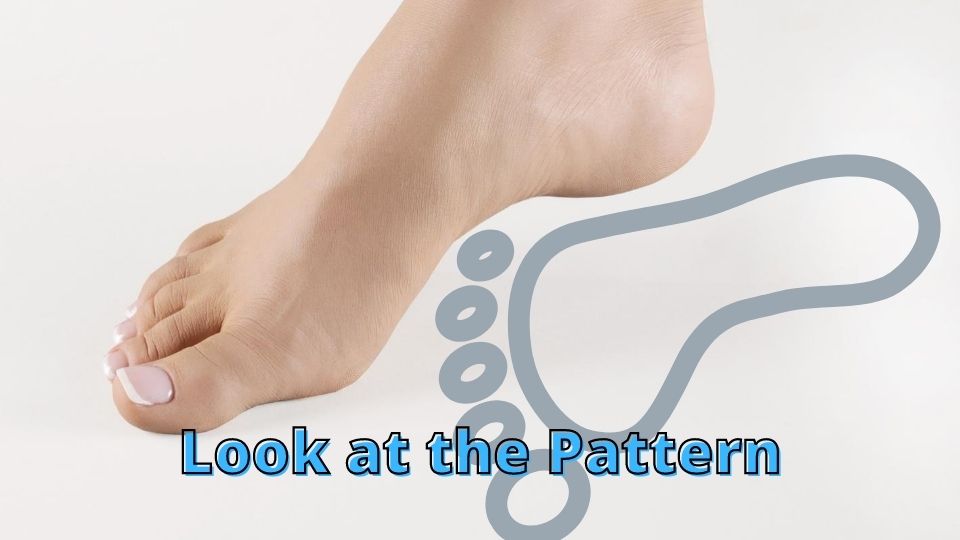
The wet test is a simple test you can do to determine what type of feet you have. Get a blank piece of cardboard and put it on the floor. Get barefooted and wet the bottom of your feet. Now stand on the cardboard and bend your knees to the point where you are almost squatting, then straighten up and step off the cardboard.
Now, look at the pattern left on the cardboard. Depending on the pattern left on the cardboard, you can determine which type of feet you have, and which type of shoe will benefit you the most. If you see most of your feet, you have a low arch and would probably benefit from stability shoes.
Will Stability Shoes Prevent Me From Getting Injured?
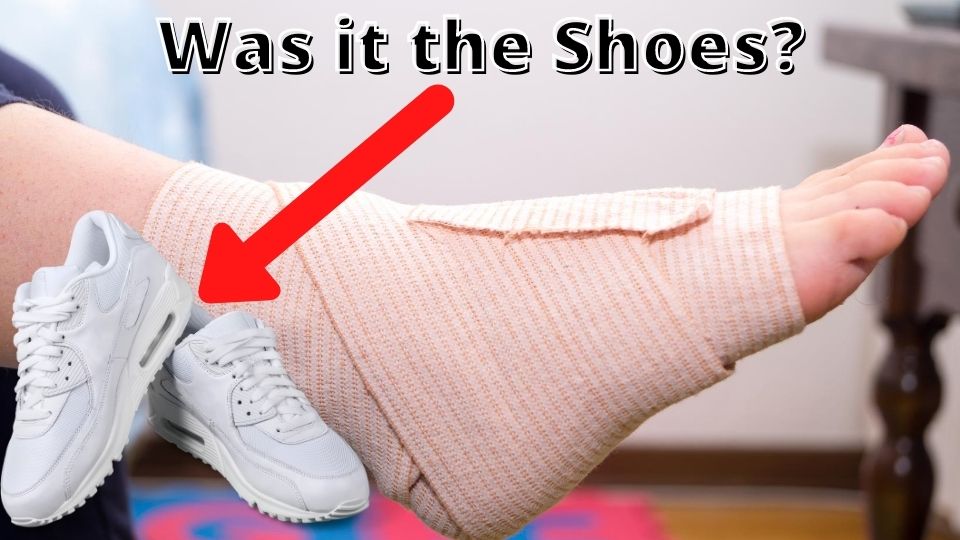
No, they will not prevent you from getting injured at all, but they are made to help protect you from injury. Stability shoes are designed to keep your feet from rolling inward to better align them with your legs, so your body doesn’t overcorrect itself. Over a period of time, that overcorrection can lead to Achilles tendinitis, shin splints, and runner’s knee.
Research shows there are greater factors that lead to running injuries. Sensible load management plays a big factor. Don’t overexert yourself when running because you are more likely to injure yourself when you are fatigued. Another major factor in injury prevention is proper strength training.
How big of a factor your shoes play in injury prevention is still hotly debated among experts. Some believe it is the most important factor in preventing running injuries. Other professionals think that they aren’t that big of a factor.
It is almost impossible to conduct accurate research because each injury is unique to itself and hard to say that injury would have been different if the runner was wearing different shoes.
Where and How to Buy Stability Shoes
Stability shoes can be purchased in stores that have running shoes. Stability shoes are not usually explicitly labeled as such, so it’s important to ask your salesman whether or not a shoe is a stability shoe. You can also research the shoe itself to determine the type of shoe it is.
The best place to purchase your shoes is at a store that specializes in running equipment. They should have a knowledgeable staff that will be able to answer your questions and help match you with the best shoe for your feet. The most important thing is to try the shoes on and see how they feel to you. A few things to remember when trying on shoes:
- The best time to go shopping for your stability shoes is at the end of the day. You have been up walking around all day, so that is when your feet will be the most swollen or bloated. You want to make sure your shoes will be comfortable even if you have fluid build-up or your feet swells as the day goes on.
- Wear your regular gear. Make sure you have on the same type of socks and any braces or anything else you wear around your feet when running. This will help ensure the shoes will be comfortable whenever you are running.
- Check both the length and the width. Stand still and make sure the shoes are the proper size, both length, and width wise. You want a snug but comfortable fit. You don’t want something that is going to restrict blood flow or hurt.
- Test the shoe. You want to see how the stability shoe responds to motion. Try doing some heel raises, walk around, and run in place or any other motions you see yourself often doing in the shoes.
- Take your time. Your shoes are going to fit you the same out running as they are in the store. Make sure they are comfortable and offer support where you need it the most. Not all stability shoes are the same, just like all feet are different. Taking the extra time to try those other pairs of shoes will only help you make the best choice for your feet.
There are also several online options, as well. The obvious negative against buying stability shoes over the internet is you don’t get to try them on first. Unless you are very familiar with that brand and model, you may end up with uncomfortable shoes.
Then there will be a very time-consuming return process. For that reason alone, I recommend going to a store to purchase your shoes, at least until you find a brand and model you prefer.
Types of Stability Shoes
There are three types of stability shoes. Most major brands have at least one type of stability shoe in their product line. The types are broken down by the various ways that manufacturers incorporate support in their shoes. Knowing these differences will help you better decide which shoe is best for you. There are three types of stability shoes:
- Daily trainers – These shoes have just a few support features and are the most popular kind of stability shoe. The added support isn’t very obtrusive, and you may not even notice it there.
- Max support – The name says it all. These shoes are made with design features like an oversized medial post, an ultra-wide outsole footprint, and a heavy shoe weight. Max support shoes are made with a focus on support and stability with little or no regard to the size or weight of the shoes.
- Lightweight trainers – These shoes have a minimalist approach, and the focus is on being lightweight and fast. They offer only mild stability features as the midsoles are usually only fitted with a tiny medial-post. Also, the materials used to make the shoes are usually a lighter weight in nature as knits are used in these shoes over heavy leathers.
Features of Stability Shoes
When shopping for stability shoes, there are a few features you will need to know about. Each offers support differently. Understanding what they are and how they function will help match your feet to the shoe that is best for you.
Medial Post
A medial post is a bar or post that runs on the medial, or inside, part of your shoe starting at the middle of the heel and running up to the flex point of your foot. The purpose is to correct inward tilt by taking on the pressure to alleviate the amount of pronation on that side of the foot pushing more weight to the outside.
Medial posts are usually made of a harder foam but be careful not to get too big or hard of a medial post. They could stop pronation, although which isn’t good for your feet either.
Contoured and Roomy Footbed
The footbed should have enough space for your toes to be able to wiggle. You want to be sure there is a half-inch space between your longest toe and the tip of the shoe. To make sure the shoe has good flexibility, the midsole should not extend further than the flex point of your foot.
Heel Counter
The heel counter refers to the part of the shoe that keeps your heel in place. This should wrap snuggly around your heel so that it prevents your heel from sliding around. The heel counter also keeps you stable while you are out on the track.
Supportive Lacing Pattern
Make sure the shoe has a lacing pattern that is comfortable and secures your foot in the shoe. The laces should not be tight enough to hurt your feet. Take your time and get the lacing right, as it can add significant stability to your feet.
Popular Brands of Stability Shoes
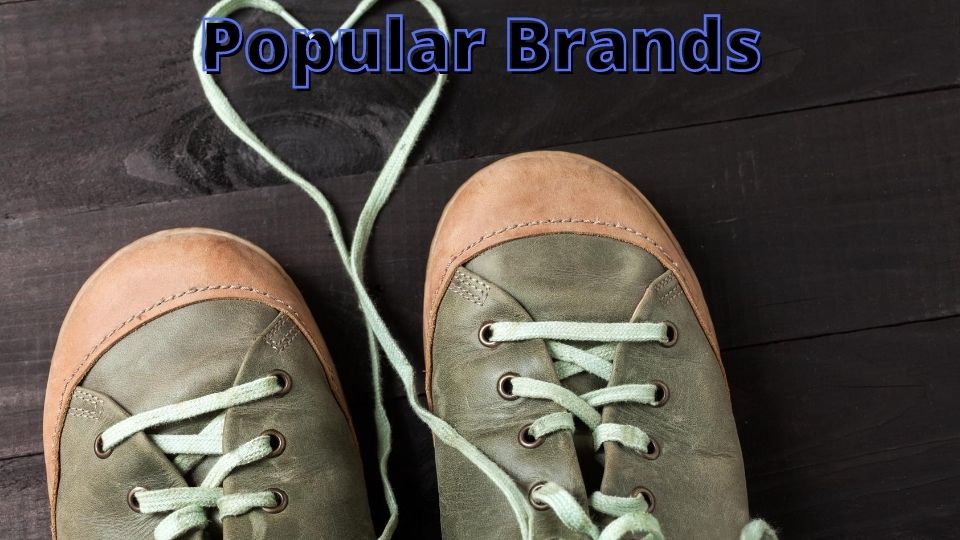
There are many different stability shoes on the market. This is not a comprehensive list, nor is this a ranking of stability shoes either. This is just a list of many popular stability shoes with a brief description highlighting a few of the features of that shoe. As stated above, it is best to go to a good running store and talk with a knowledgeable staff member and try on several pairs before making a final decision.
Popular Brands
| Asics GT 2000 10 (Amazon Link)
| Not very lightweight, this shoe is good for moderate overpronation and has a secure fitting upper. It has a supportive cushioning that uses two types and some gel in the heel. |
| Saucony Guide 16 (Amazon Link) | This shoe is a daily trainer that is great for long runs. It features PWRRUN Midsole, which is a new TPU/EVA blended foam that is light and responsive, and FORM FIT Upper, which is a three-layer cushioning system that helps lock your feet in place and adds to the stability of the shoe. The shoe is not very breathable and not suited for speedwork. |
| Brooks Adrenaline GTS 22 (Amazon Link) | A lightweight trainer that is suited for mild overpronation. The upper is mostly a lightweight mesh. The guide rail system stabilizes your run without overcorrection or hard pressure below your arch, making it a shoe that is comfortable for both overpronators and neutral runners. Although a lightweight trainer, this shoe might not be the best choice for speedwork as it is a little heavier than some other lightweight trainers. |
| Hoka One Gaviota 4 (Amazon Link)
| A max support stability shoe that features J-Frame technology. J- Frame technology is similar to Brooks’s GuideRail system and is effective at providing stability for your foot and ankle. With such a massive midsole, this shoe feels a lot lighter than it looks. |
| New Balance 840v5 (Amazon Link) | Another max support stability shoe, this shoe might be the best for severe overpronators. It is slightly bulk but extremely stable. Featuring a TruFuse midsole that uses two types of foam and a dual-density medial post, which is designed to give runners firm, stable support that cushions your stride and helps correct any excess pronation. This is not a shoe for neutral runners. |
| Mizuno Wave Inspire 20 (Amazon Link) | Listed as a daily trainer, due to its weight and lack of flexibility, this shoe is closer to a max support stability shoe. The upper is made with AeroHug technology, which wraps around your foot to eliminate space between your foot and the shoe. This creates a comfortable, adaptable fit. The soles use Mizuno’s Waveplate technology, which some people feel isn’t as responsive as other company’s current soles. |
| Nike React Infinity Run Flyknit 2 (Amazon Link) | A very durable shoe that has a great cushion for a lightweight stability shoe. This shoe gives soft stability with a wide shape and Nike’s React foam. The shoe does have a little bit of a loose feel that some people may not prefer. |
Can Shoe Insoles Help With Stability?
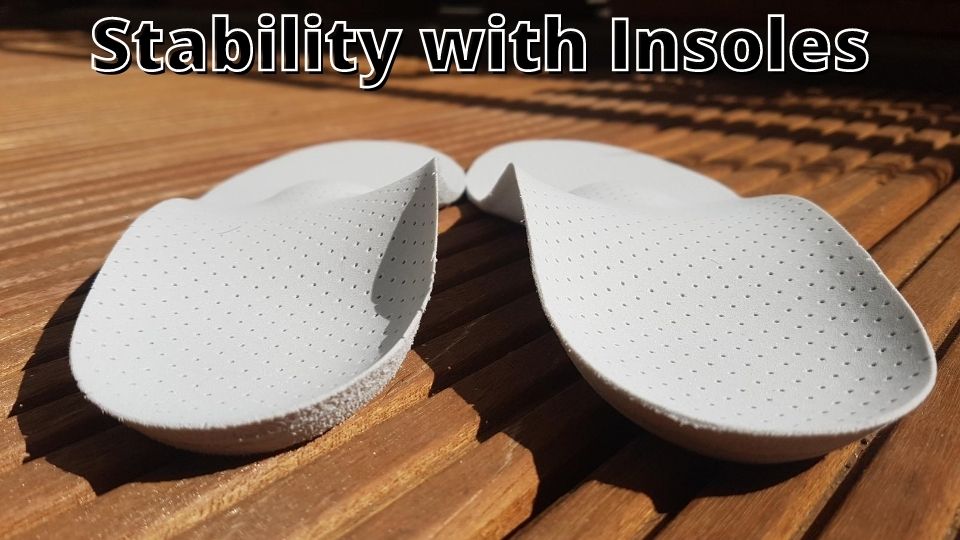
Arch supports, in the form of stabilizing insoles, can improve stability. Arch supports may be able to help to correct poor foot biomechanics that may be causing pain in the foot, knee, ankle, and back. These ailments can impair a person’s gait, as well as their balance.
As we discussed, overpronation can be reduced with proper arch support. This may come in the form of specialized footwear like stability shoes, or the form of insoles or orthotics. These stabilizing elements help with support and foot position.
In addition to correcting overpronation, insoles can help to minimize pain from plantar fasciitis and structural misalignment.
There are many different models on the market, designed for different foot shapes and sizes. You also have to consider what type of footwear you are wearing, because insoles are designed in different shapes and thicknesses, depending on the type of shoe you plan to use them in.
The amount of space they take up in a shoe is referred to as the “volume.” There are three classifications for the volumes of insoles (also called “footbeds”) and the amount of shoe space they fill up:
|
Type of insole |
Type of shoe |
Type of foot |
|
High-volume insoles |
Larger volume footwear, such as boots or running shoes |
High arches |
|
Medium-volume insoles |
Casual shoes, some athletic shoes |
Various arch heights |
|
Low-volume insoles |
Close-fitting shoes, such as skates or cycling shoes |
Low arches, flat feet |
Most of today’s insoles are designed to be moisture-wicking and easy to clean. Some of the benefits of well-made insoles include:
- Cushioned arch support
- Equal distribution of weight and pressure
- Improved balance
- Reduction of pressure
- Improved foot alignment
- Reduction of pain from plantar fasciitis and other common ailments
- Prevention of common injuries
Top-Rated Insoles
Here are five models rated highly and available online, followed by a short description of what makes them stand out.
- X-MUSCLE Shoe Insoles for Men and Women All-Round Shock Absorbing Walking Insoles (AD) – Manufacturer says they can correct foot shape, adjust posture, maintain limb stability and balance, prevent and avoid injury
- SOLE Signature EV Ultra-U Thick Orthopedic Plantar Fasciitis Insoles for Men and Women (AD) – Promoted to provide the necessary support and cushioning needed for any outdoor adventures
- Plantar Fasciitis Arch Support Insoles for Men and Women Shoe Inserts – Orthotic Inserts – Flat Feet Foot – Running Athletic Gel Shoe Insoles (AD) – Maker says these premium, podiatrist-recommended shoe inserts minimize arch pain and offer excellent comfort
- VoMii for Arch Support Insoles, Flat Feet, Plantar Fasciitis Orthotic Inserts with EVA Sports Comfort Best Shock Absorption (AD) – Said to provide good support and pressure, while balancing the force structure of foot, corrects abnormal walking patterns.
- Powerstep Full Length Orthotic Shoe Insoles Original with Arch Support Unisex- Relieve Metatarsal, Arch and Heel Pain (AD) – An orthotic shoe insole that offers full length, total contact support. Boasts a firm but flexible support shell, built-in arch support and deep heel cradle for increased stability.
Depending on how high-tech the insole is, a pre-packaged one will cost you anywhere from $10 to $100 per pair. There is also the option to purchase customized insoles or orthotics.
How Does a Custom Orthotic Help with Stability?
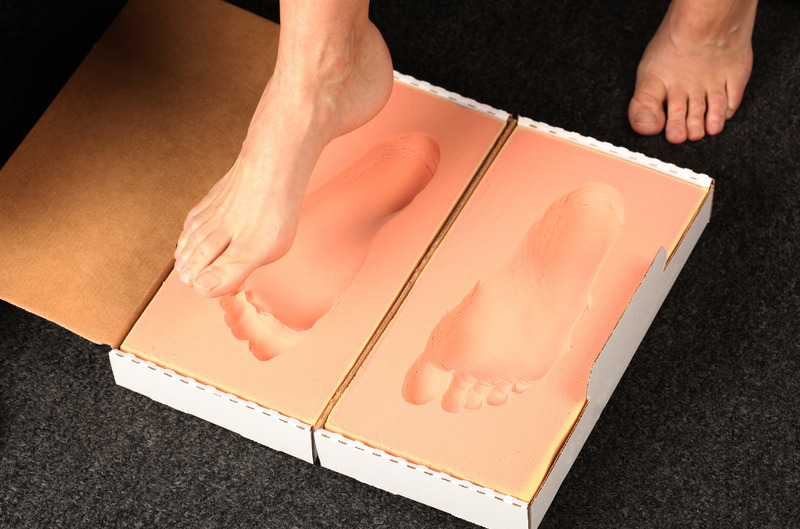
While many of us can find the support and stability we need among the great variety of options on the ready-to-buy market, some may choose to go for a custom-made orthotic.
Custom orthotics are actually prescribed by a podiatrist after performing an assessment of your body and health history. From this valuation, a doctor determines what material is needed to give you the appropriate amount of rigidity or flexibility needed to correct your situation or ailment.
Harvard Health (article) likens the difference between over-the-counter inserts and prescription orthotics to the difference between reading glasses you purchase at the drug store and those you get from a licensed optometrist. In short, the OTC inserts can do the job, but the custom ones have fitted more accurately to the individual. As you would expect, you pay for the professional assessment fitting, prescription, and product – up to $500. However, another major difference is that custom orthotics will last you five years or more, while purchased insoles will have to be replaced twice a year.
Can You Use Inserts Inside Stability Shoes?
If your stability shoes fit properly, they should be doing the job you need. If, after purchasing stability shoes, you still find yourself with arch pain or knee pain or feel that the impact of running is still causing you pain, it’s time to check your shoes – and your body.
There may be an underlying or chronic problem that isn’t going to be solved with an insert. You may need to strengthen your hips or work on your alignment to fix the issue.
However, no two feet are alike. Maybe your feet and shoes will benefit from the addition of a low-volume insole. Consult with the shoe professional who fitted you with the stability shoe. Maybe even visit a podiatrist to get an expert opinion on your unique situation.
Wrapping up
There are many helpful options on the market to assist you in finding the stability and support you need for running, walking, or any outdoor activity. Finding a good stability shoe means finding the right fit. Visit a shoe shop with a variety of options so you can get the shoe style that is the best match for your foot.
Insoles or custom orthotics are also an option. Depending on your issue, you are sure to find a solution out there for you. However, if you find your discomfort persists or worsens, it is time to see a professional to determine what physical issue may be impairing your stability, affecting your gait, or causing pressure on your feet or joints.
Once you find the stability you need, you’re bound to find more comfort and joy in your running!
Thanks for visiting Helpshoe.com

